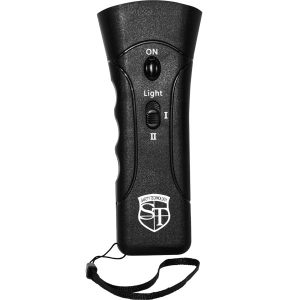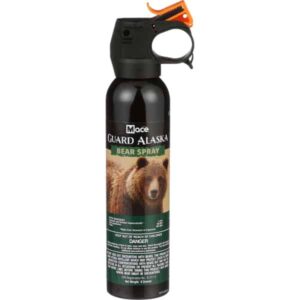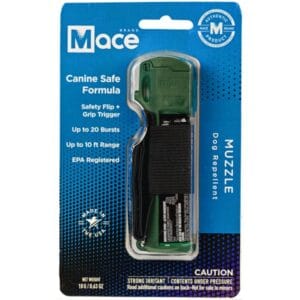free shipping on orders over $25
We're having a sale on all our products. Enter your email below to be notified about future sales.


When thinking about dog and bear repellents, you might wonder which option is the most effective and safest for your needs. From bear spray to noise devices, each type offers unique advantages and limitations. Bear spray, for instance, is powerful but unpredictable with dogs, while noise devices provide non-physical deterrents. Physical barriers like fences often deliver the most reliable results. Choosing the right repellent isn’t straightforward and requires careful consideration of your specific situation. But, what factors should you prioritize when making your decision? Let’s explore the details.
Showing all 4 results




When considering types of dog bear repellents, it’s important to know your options and their effectiveness. Bear spray, while 98% effective against bear attacks, isn’t specifically designed for dogs. It may not be as effective on aggressive dogs due to capsaicin causing discomfort rather than deterring them entirely. The risks associated with using bear spray on dogs include irritation, harm, and potential adverse reactions. Proper usage involves aiming for the face, using short bursts, and maintaining a safe distance. If used, always seek veterinary care afterwards.
However, there are other dog repellents you should consider. Canine repellents and Noise devices can be highly effective; noise devices emit sounds that irritate dogs, prompting them to leave the area. Both of these options reduce the risks associated with bear spray. Physical barriers, such as fences, can also be an effective dog repellent by preventing them from entering certain areas altogether.
Each type of dog repellent has its pros and cons. Understanding the risks and effectiveness of bear spray versus other methods will help you make an informed decision on how best to protect yourself and your property.
When using canine spray on a dog, aim for the face and use short bursts while maintaining a safe distance.
It’s important to understand the correct technique to guarantee safety and effectiveness.
To effectively use canine spray on a dog, aim directly at its face, targeting the eyes and nose. This approach guarantees the dog repellent has the maximum deterrent effect. Use short bursts to maintain control and avoid over-spraying. Aiming for a direct eye contact point increases the effectiveness, causing immediate discomfort and encouraging the dog to retreat.
Keep a safe distance when deploying dog spray. This helps prevent any potential retaliation from the dog. Ideally, you should be at least 10-15 feet away. By targeting the sensitive areas of the face, you maximize its deterrent properties.
If the dog continues to approach, use another short burst while maintaining your distance and aiming at the face. Always be prepared to move away quickly after deploying the spray.
Keep in consideration, this method is for emergency situations where you need to bear safety in mind and that of others. If the dog shows signs of severe distress after exposure, seek veterinary attention immediately to address any potential health concerns.
When using bear spray for deterrence, keep in mind the following points:
Effectiveness: Bear spray is 98% effective against bear attacks, but its efficacy on dogs is less certain due to limited research. It mightn’t work as intended, causing more harm than good.
Risks: Spraying a dog with bear spray can result in severe irritation, harm, and potential adverse reactions. You may need to seek veterinary care if the dog is affected.
Proper Use: Aim for the dog’s face and use short bursts. Maintain a safe distance to minimize risks to yourself and the animal.
Alternatives: Consider safer dog deterrence methods like noise devices, citronella spray, or physical barriers, which can be equally effective without the associated risks of bear spray.
Understanding these factors guarantees you use bear spray responsibly and explore other options for dog deterrence.
While bear spray is 98% effective against bear attacks, it mightn’t work as well on dogs due to the capsaicin causing discomfort rather than deterrence.
When thinking about dog and bear repellents, you might wonder which option is the most effective and safest for your needs. From bear spray to noise devices, each type offers unique advantages and limitations. Bear spray, for instance, is powerful but unpredictable with dogs, while noise devices provide non-physical deterrents. Physical barriers like fences often deliver the most reliable results. Choosing the right repellent isn’t straightforward and requires careful consideration of your specific situation. But, what factors should you prioritize when making your decision? Let’s explore the details.
New Dominion Security
1867 Caravan Trail
#105
Jacksonville, FL 32216
Call us toll free: (800) 859-5566
